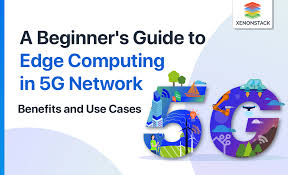Exploring the Impact of 5G and Edge Computing on Cloud Gaming Performance

Cloud gaming has revolutionized video gameplay by enabling users to access their favorite games without sophisticated equipment. Streaming games online allows gamers to enjoy seamless gameplay and top-notch graphics on various devices, including laptops and smartphones. This change has made gaming more accessible to a broader range of people, enabling gamers to start playing games without buying pricey consoles or PCs upfront. The potential for cloud gaming is expanding as better internet connections become more prevalent.
Recent advancements in 5G and edge computing have significantly improved cloud gaming services by reducing latency and enhancing speed. 5G networks offer higher data transfer rates, allowing gamers to experience faster downloads and smoother gameplay. Edge computing, which processes data closer to the user, minimizes lag and ensures more responsive interactions. These technologies open the door to a smoother, more engaging gaming experience, increasing cloud gaming’s accessibility and appeal for gamers everywhere.
Key Takeaways:
- Understand how 5G technology improves cloud gaming latency and bandwidth.
- Explore the benefits of edge computing in delivering seamless gaming experiences.
- Discover how these technologies together impact the gaming industry.
- Identify the potential challenges and future trends in cloud gaming.
Impact of 5G on Cloud Gaming
The deployment of 5G technology has been a game-changer across many industries, and cloud gaming is no exception. This next-generation network offers incredible data transfer rates, elevated reliability, and dramatically lower latency than 4G, which are crucial for gaming, mainly when played online. With 5G, high-definition games can be streamed efficiently, and players experience fewer delays and disruptions, enhancing overall immersion. Since smartphones can now smoothly stream console-quality games, this creates new opportunities for mobile gaming. Even the fastest multiplayer games may become more playable on mobile devices than ever because of 5G’s lower latency.
Moreover, 5 G’s increased bandwidth allows multiple devices to be connected simultaneously without compromising performance, making it ideal for households with numerous gamers or diverse entertainment needs. This additional capacity ensures players enjoy a smooth, uninterrupted gaming session, even during peak usage. The shift from wired connections to 5G provides flexibility and freedom in gaming setup and supports rapid advancements in mobile gaming ecosystems
Advantages of Edge Computing
Edge computing supports the evolution of cloud gaming by shifting some of the processing workloads closer to the user’s location, significantly minimizing latency and improving game responsiveness. By decentralizing data processing, edge computing facilitates immediate access to data and faster interaction, crucial for gaming environments where precision and rapid reactions are necessary. This benefit is particularly noticeable in competitive gaming scenarios like esports, where every millisecond matters. Edge computing is a transformative technology that enhances game speed and the quality of user experiences across variable network conditions.
Aside from reducing lag, edge computing addresses bandwidth constraints by managing data locally and reserving central bandwidth for other tasks. This approach augments the user experience by providing higher-quality streaming and reducing latency, irrespective of the player’s location. Furthermore, edge computing ensures enhanced security by keeping data processing close to the network edge, where data privacy and integrity can be better managed, thus fostering gamer trust and satisfaction.
Synergy Between 5G and Edge Computing
The interplay of 5G and edge computing represents a symbiotic relationship driving forward cloud gaming capabilities. While 5G focuses on transmitting vast amounts of data at impressive speeds, edge computing handles this data appropriately by processing and analyzing it closer to the user’s physical location. This combination fosters an infrastructure capable of delivering high-fidelity gaming with the low latency necessary for a superior gaming experience. This synergy supports interactive and immersive gameplay, making it feasible to execute high-quality, server-side rendered games that earlier broadband technologies couldn’t help.
Gamers can expect more consistent gameplay and fewer instances of lag or disconnection, translating into a fairer and more enjoyable playing field, particularly in competitive multiplayer games. Developers are empowered to create richer game worlds with more interactive elements and dynamic content that respond in real time, further blurring the lines between cloud gaming and traditional gaming experiences.
Industry Challenges and Innovations
Despite the remarkable potential that 5G and edge computing bring to cloud gaming, several challenges require careful navigation. The deployment of 5G and widespread adoption of edge computing necessitates substantial investments, both financially and in terms of infrastructure development, which can be a daunting hurdle for stakeholders. Furthermore, the need to ensure data security and user privacy is paramount, with cloud gaming platforms poised to store and handle vast quantities of personal data. Innovations such as advanced encryption protocols, adaptive streaming solutions, and AI-driven maintenance systems are emerging as critical measures to address these challenges, enabling developers to optimize performance and secure user data.
Collaborative efforts between cloud gaming platforms and telecommunications firms are instrumental in tackling these challenges. By partnering with network providers, gaming companies can expedite the integration of these technologies, ultimately delivering more robust and reliable gaming experiences. Strategic alliances allow for shared resources, fostering faster innovation and implementing groundbreaking cloud gaming solutions. The synergies between these industries promise a future where gaming is more accessible, secure, and enjoyable than ever before.
Read Also: eFootball: The Future of Digital Soccer Gaming with PERENASI!
Future Prospects
Integrating 5G and edge computing in cloud gaming offers promising prospects that are likely to revolutionize the gaming industry and beyond. The enhanced capabilities provided by these technologies give developers the freedom to explore new, uncharted realms of creativity, offering gamers more bespoke, immersive, and interactive experiences. New gaming paradigms are on the horizon, combining virtual reality (VR) and augmented reality (AR) with traditional gameplay, resulting in unprecedented realism and complexity. The potential to merge the internet and offline worlds into mixed-reality experiences that revolutionize entertainment is rapidly approaching as these technologies become more widely used.
The future gaming landscape will likely witness a proliferation of games that push the boundaries of storytelling and interactivity, fostering rich narratives that adapt to player choices. Cloud gaming’s increased accessibility will result in a more inclusive community where players from all backgrounds may discover their niche, guaranteeing a varied and international player base. As cloud gaming ecosystems develop, there will be countless opportunities for creativity in creating, sharing, and consuming games, overcoming gaps in technology and culture.
Concluding Thoughts
The integration of 5G and edge computing is set to fundamentally transform the world of cloud gaming. These technologies offer improved speed and reduced latency and open the door to new gaming experiences that are richer and more integrated than ever before. As these solutions evolve, players can anticipate brighter, more interconnected futures in gaming. Moving forward, strategic partnerships, continued technological innovation, and focused efforts on security and privacy will be vital. Ultimately, these elements will sculpt a new era of gaming, one that promises endless potential and excitement for gamers and developers worldwide.




